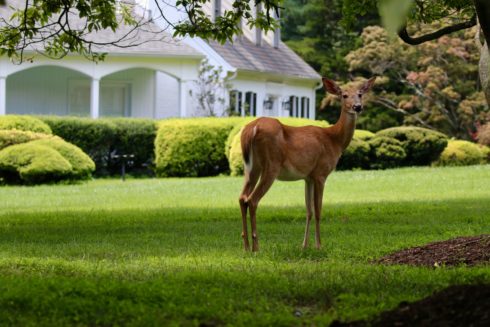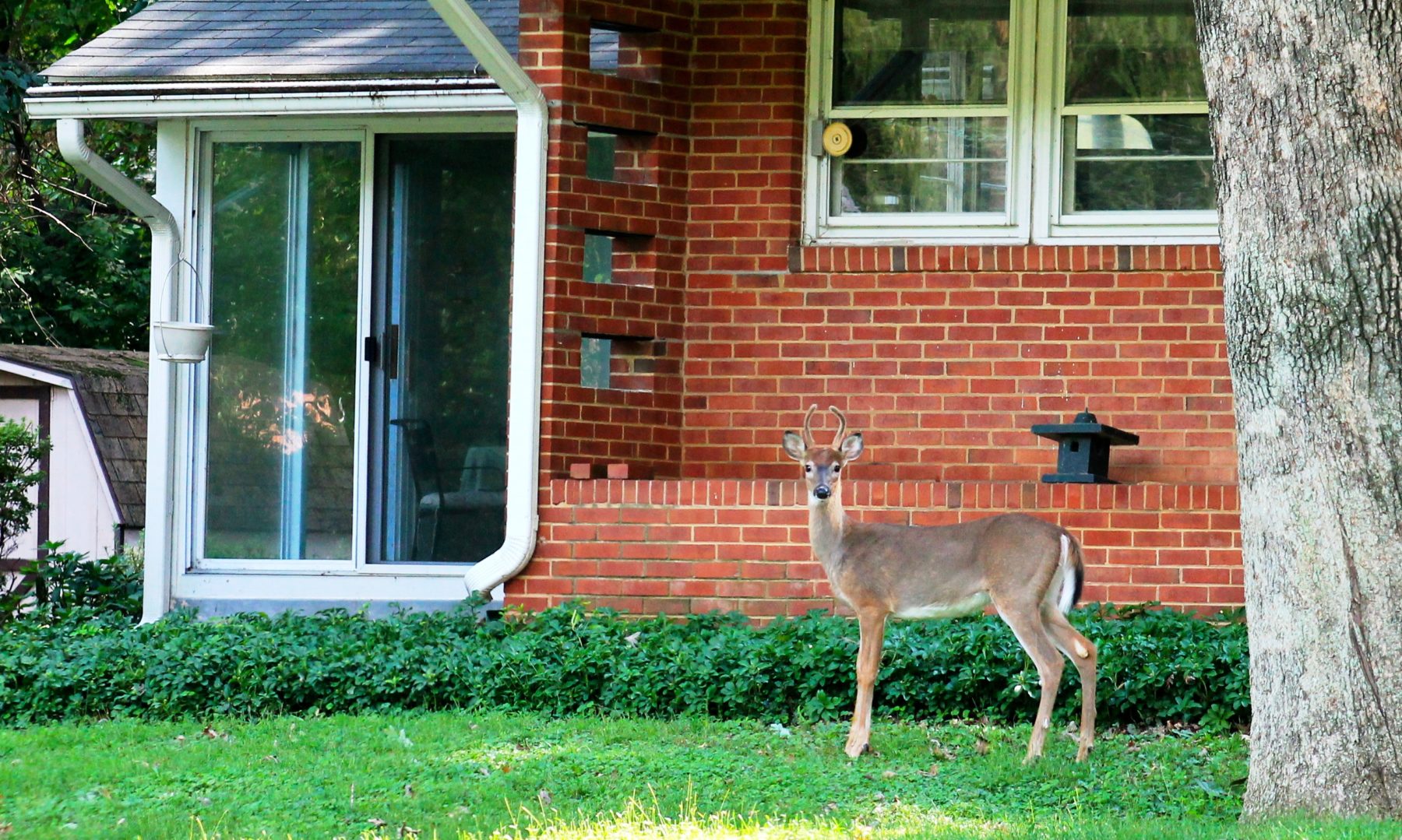2024 – 2025 Deer Population Management
Schedule & Locations Announced Later This Summer
Managed deer hunting is a controlled deer hunting effort permitting qualified, recreational hunter participants to use certain legal firearms and/or archery (compound bows/crossbows), for the purpose of reducing and/or maintaining deer numbers on parklands to the benefit of natural ecosystems, local farmers, citizen landscapes, reducing Deer Vehicle Collisions (DVC’s) and an overall reduction of deer-human conflict.
White-Tailed Deer in Montgomery County, Maryland
Montgomery County residents continue to see an abundance (and overabundance) of white-tailed deer (Odocoileus virginianus) across the county (especially in urban/suburban areas). For many people, the sight of a deer bounding gracefully through the forest is an exciting and memorable experience that they would like to see more often. But, for many residents whose landscape plantings or farm crops have been devastated by deer, who find numerous piles of feces in their yards, who have had the costly experience of hitting a deer with an automobile, or who worry about the potential for disease, there is concern that we may have “too much of a good thing.”
Nearly eliminated in the early 1900s, a reintroduction program begun in the 1930s successfully re-established white-tailed deer in the Eastern U.S. As development increased into the once-rural areas of Montgomery County, a patchwork of natural areas and landscaped suburban yards, ideal deer habitat (“edge habitat”), was created. Often, it is said that humans invaded deer habitat. However, while this is true to a degree, it is human development progress that has created habitat where white-tailed deer thrive.
With an increase in edge habitat, few wildlife predators, and limited hunting, deer populations increased dramatically over the past thirty years. The result has been an increase in deer-human conflicts, including deer-related automobile accidents, damage to agricultural crops, residential gardens and landscaping, and concerns about the potential for spread of disease.
To request information for how to best coexist with deer, please contact Customer Service or consider reaching out to one of the other resources provided below.
The Need for Deer Population Management
Concern about deer-related impacts over the past three decades indicates that deer populations in some areas of Montgomery County have exceeded the cultural carrying capacity (i.e. exceeded what citizens will tolerate). There are also continuing concerns about the damage deer are causing to natural communities in our parks, especially those related to forest system ecology.
Public education on the use of repellents and fencing to protect property and crops, and efforts to reduce deer-auto collisions through public awareness, warning signs, and reflectors, are important tools in reducing deer-human conflicts and increasing human tolerance for deer. These methods alone, however, do not solve the problem of overpopulation.
If left unchecked, deer populations can grow exponentially. As the number of deer remains high and/or continues to increase in many areas of the county, deer-related conflicts also continue to persist and increase. Habitat degrades, and in the long run, deer may suffer as the population becomes unhealthy and susceptible to disease. A program of deer population reduction and maintenance can reduce both deer-human conflicts and ecological deer impacts and must be considered as a tool in the long-term reduction of deer-related conflicts in Montgomery County. The County’s Deer Management plan outlines methods of population reduction for public and private lands. A copy of this plan can be made available by request to Customer Service.
The goal of Montgomery County’s Deer Population Management Program is to reduce human-deer conflicts to a level that is compatible with human priorities and land uses. In this way, citizens and white-tailed deer can co-exist and deer will remain a valued part of our county’s natural landscape.
To learn more, you may request information for how to best coexist with deer, please contact Customer Service or consider reaching out to one of the other resources provided below.
Comprehensive Management Plan for White-tailed Deer
In 1993, in response to citizen concerns about deer-related problems, the Montgomery County Council established a Citizen Task Force to Study White-tailed Deer Management. As a result of this group’s recommendations, the Montgomery County Deer Management Work Group (DMWG) was established to develop a deer management plan for the County and oversee the implementation of a countywide deer management program.
The DMWG is a multi-agency committee with representatives from the Maryland-National Capital Park and Planning Commission, (M-NCPPC) Department of Parks, the Maryland Department of Natural Resources Wildlife and Heritage Service, the Montgomery Soil Conservation District, the Montgomery County Police Department, the U.S. National Park Service, the City of Rockville, and the Washington Suburban Sanitary Commission. The goal of the plan is to “Reduce human-deer conflicts to a level that is compatible with human priorities and land uses.”

The Montgomery County Deer Management Work Group (DMWG)
- The Maryland-National Capital Park and Planning Commission (M-NCPPC), Department of Parks
- Maryland Department of Natural Resources – Wildlife and Heritage Service
- Montgomery Soil Conservation District
- Montgomery County Police Department
- U.S. National Park Service
- City of Rockville
- Washington Suburban Sanitary Commission
More Information
The Montgomery County Department of Parks strives to keep its citizenry informed and involved. If you wish to be included on our mailing list to receive information regarding proposed programming, input opportunities, and annual program schedules, etc., please send an e-mail request to Wildlife Ecology & Management Unit staff; ATTN: Deer Management Email List.
